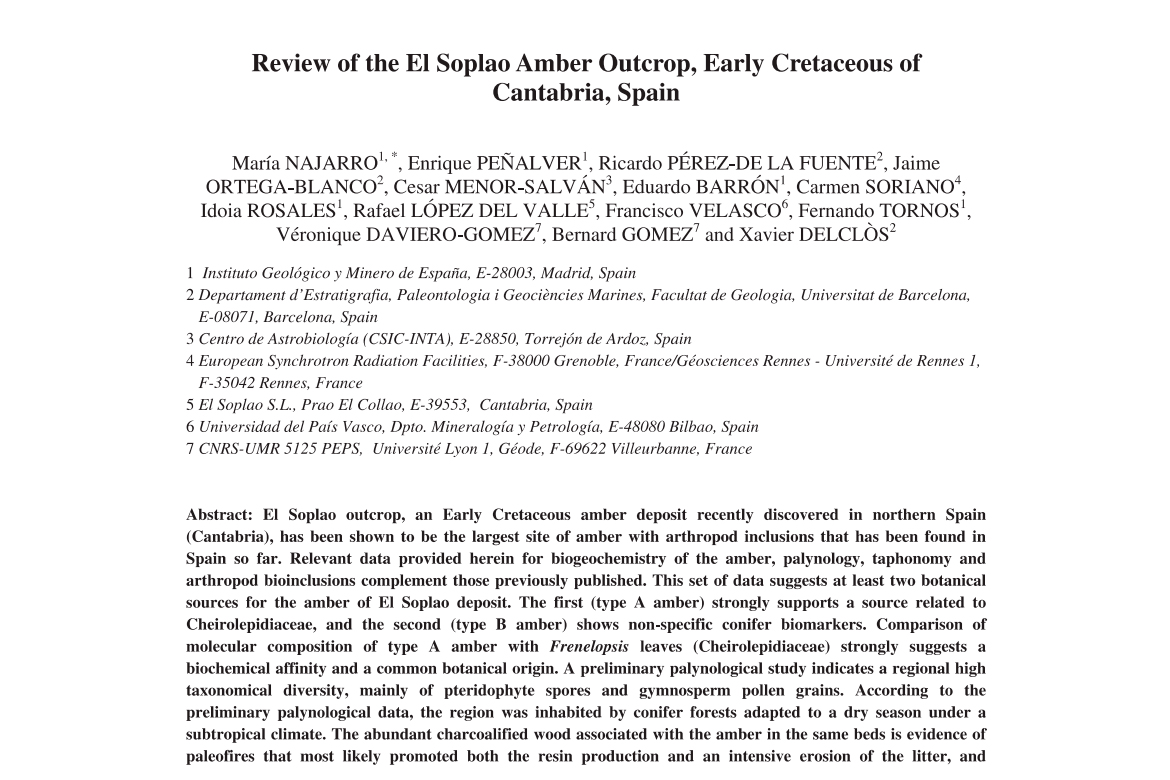Abstract: El Soplao outerop, an Early Cretaceous amber deposit recently discovered in northern Spain (Cantabria), has been shown to be the largest site of amber with arthropod inclusions that has been found in Spain so far. Relevant data provided herein for iogeochemistry of the amber, palynology, taphonomy and arthropod bioinclusions complement those previously published. This set of data suggests at least two botanical sources for the amber of El Soplao deposit. The first (type A amber) strongly supports a source related to Cheirolepidiaceae, and the second (type B amber) shows non=specific conifer biomarkers. Comparison of
molecular composition of type A amber with Frenelopsis leaves (Cheirolepidiaceae) strongly suggests a1 affinity and a common botanical origin. A preliminary palynological study indicates a regional high “al diversity, mainly of pteridophyte spores and gymnosperm pollen grains. According to the inary palynological data, the region was inhabited by conifer forests adapted to a dry season under a subtropical climate. The abundant charcoalified wood associated with the amber in the same beds is evidence of paleofires that most likely promoted both the resin production and an intensive erosion of the litter, and subsequent great accumulation of amber plus plant cuticles. In addition, for the first time in the fossil record, ¡ed plant fibers as bivinclusions in amber are reported. Other relevant taphonomic data are the exceptional presence of serpulids and bryozoans on the surfaces of some amber pieces indicating both a long exposure on marine or brackish-water and a mixed assemblage of amber. Lastly, new findings of insect bioinclusions, some of them uncommon in the fossil record or showing remarkable adaptations, are reported. In
conclusion, a documented scenario for the origin of the El Soplao amber outerop is provided.

